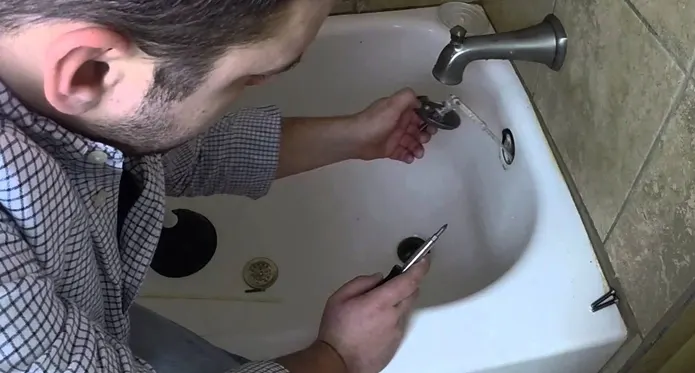Last Updated on November 14, 2023
In the summertime, after spending plenty of time at the beach, you come home to find sand in your bathtub and all over your bathroom floor.
It’s so frustrating when you spend hours cleaning, only to see the sand reappear the next day. Not to mention, it can be really tough to get the sand out of those tiny cracks and crevices. If you don’t know how to properly clean sand from a bathtub drain, you might end up making the problem worse.
“How to Clean Sand From a Bathtub Drain” is here for you as a helping guide that provides simple and easy instructions for getting rid of that pesky sand once and for all. Plus, our tips will help keep your bathroom clean all season long.
How to Clean Sand from a Bathtub Drain: Cleaning Steps
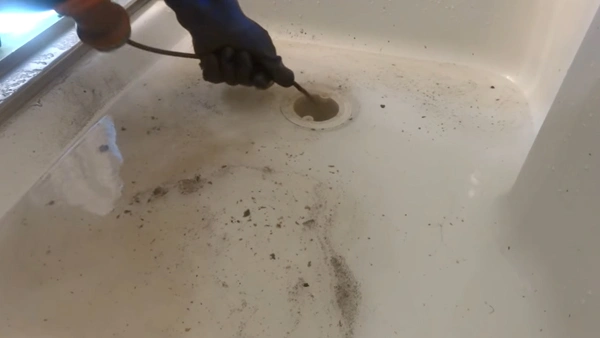
There are a few ways to clean your bathtub or shower drain from sand, but we will demonstrate one method using sequential steps.
- Start by removing the drain cover. This will give you access to the sand clog.
- Use a plunger to try and dislodge the sand clog. Be sure to cover the entire drain opening with the plunger and use firm, even strokes to cover the overflow hole.
- If the plunger does not work, you can try using a plumber’s drain snake. Insert the drain snake into the drain and turn it clockwise as you push it down.
- The snake will help to break up sand clogs in the bathtub or shower drain clog.
- Make a homemade bathtub drain cleaner using salt, baking soda, and vinegar. Combine half a cup each of salt, baking soda, and vinegar in a bowl.
- Pour this mixture down your drain and allow it to sit overnight. In the morning, flush with hot water to get rid of any sand clogging. You can also try using a mixture of baking soda and vinegar to clean your drain.
- You can also try pouring a pot of boiling water down the bathtub drain. Pour 1/2 cup of baking soda down the drain, followed by 1/2 cup of vinegar.
- Allow the mixture to sit for 30 minutes, then flush with hot water. This will help to melt any grease or sand that may be causing the bathtub or shower drain to clog.
- If you have a standing shower, it is also possible for you to use a handheld shower head to power through the clog. Aim the bathtub drain or shower head directly at the clog and use full force to break it up.
- If none of these methods work, you may need to use a chemical drain cleaner. Be sure to follow the instructions on the drain cleaning products carefully, as these chemicals can be very dangerous.

Repeat these steps as needed to keep your drain clean and running smoothly. Once you have used a chemical drain cleaner, flush the drain with hot water for several minutes. This will help to remove any residual chemicals from the drain. If your shower drain or bathtub drain is still clogged, you may need to call a professional plumber for assistance.
Why is there Sand in the Bottom of My Toilet Bowl?
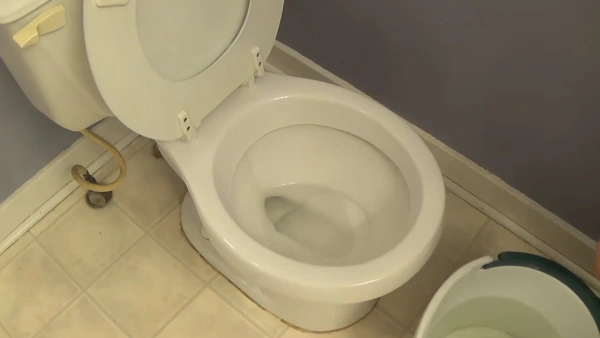
There are a few reasons why sand may end up at the bottom of your toilet bowl. The first possibility is that it came from your water supply. If you have well water, it is not uncommon for there to be trace amounts of sand in the water. Over time, this sand can build up in the bowl.
Another possibility is that the sand is coming from your pipes. If your bathtub water pipes are made of iron, they can slowly rust over time. This rust can then break off and mix with the water in the toilet bowl, creating a sandy mixture. It is possible that the sand that you are seeing is coming from your toilet brush.
As the brush wears down, the bristles can become frayed and start to shed. These loose bristles can then fall to the ground and collect down at the lowest part of the ground level of the bowl after you flush. While a little bit of sand in your toilet bowl may not seem like a big deal, it is important to keep an eye on it. If you notice a large amount of sand, it could be an indication of a bigger problem with your plumbing.
You Can Also Check: Can you plug a toilet bowl when you clean it?
Why is there Dirt Coming Out of My Bathtub Faucet?
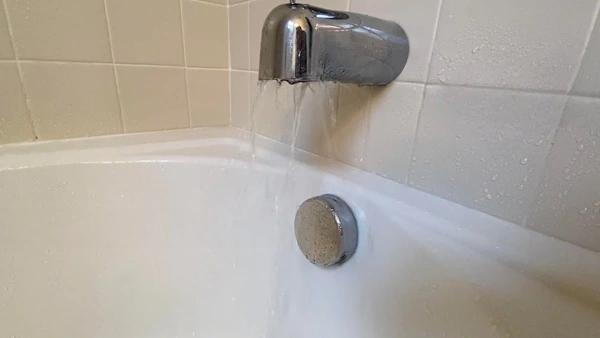
Over time, sand sediment can continue to accumulate in water lines and make its way into your home’s plumbing. Many homeowners have experienced the phenomenon of dirty sand coming out of their bathtub faucets. There is dirt coming out of your tub faucet because there is something blocking the valve that allows the water to flow.
While sand in a bathtub may be alarming at first, there is usually no cause for panic. When this happens, you might notice that your water pressure has decreased or that there is dirt or rust coming out of your faucets. This can be caused by the buildup of calcium, rust, or other minerals over time.
Depending on whether you have a detachable shower head, you may be able to remove it and clean sand from the valve with a vinegar solution. This is nothing to worry about and can be easily fixed by flushing your pipes. The formation of sand dirt is coming from the water supply itself and is not a sign of a problem with the plumbing.
There is usually a small amount of sand dirt that is commonly accompanied by a small amount of sand sediment, which can build up over time and cause sand clogs. If the problem persists, it could be a sign of a more serious issue, such as a leak in your water line. If you notice that the pressure in your plumbing is reduced or that your faucet is starting to drip, you may want to have your plumbing checked for clogs.
Why Remove Sand Sediment from a Bathtub Drain?
Removing sand sediment from a bathtub drain helps to keep the bathtub looking clean and prevents the buildup of dirt and grime by mixing up sand. It also helps to extend the life of the bathtub and prevents damage to the finish. If you do not remove sand sediment from a bathtub drain, it will build up over time and can cause problems with the drainage system.

The sludge from sand can also create a dirty and unpleasant bathtub environment. In extreme cases, the sand sediment can also cause structural damage to your bathtub. Because of this reason, it is important to regularly clean and remove sediment from your bathtub to avoid these problems.
How to Remove Sand Sediment from a Bathtub?
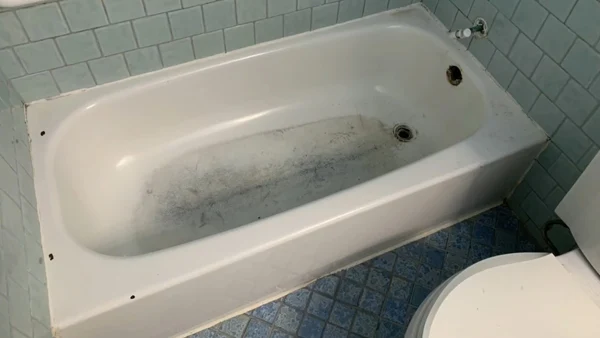
Method: 01
Fill the bathtub with water to the desired level. Add a few drops of dish soap to the water and mix in well. Place a plunger over the drain and push down firmly. Allow the suction to pull the water and sand sediment down your bathtub drain. Repeat as necessary until all of the sediment has been removed from the bathtub. Rinse the bathtub well with clean water and clean the plunger for next time use.
Method: 02
Pour a gallon of white vinegar into the bathtub and let it sit for an hour. After an hour, use a sponge to scrub the tub, especially the sand clog, and the sediment will come right off. To clean out and get rid of the accumulated sand from your bathtub, pour about half a cup of baking soda over the surface of the tub and allow it to soak for 30 minutes. Rinse with hot water and repeat as necessary.
If you have hard water, there is a possibility that you will need to use a little more baking soda to remove the sand sludge. You can also try using white vinegar instead of baking soda. Pour 1/2 cup of vinegar over your bathtub and allow the vinegar to sit there for approximately about thirty minutes.
Why Cleaning Shower or Bathtub Drain Is So Important?
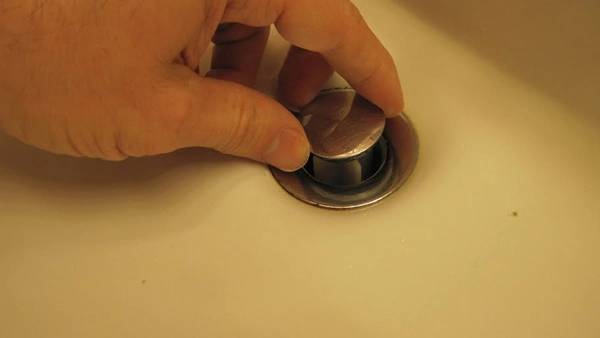
Cleaning your shower drain or bathtub drain is one of the most important parts of your shower. Not only does cleaning help to remove sand from the bathtub or shower drain, but it also helps to remove dirt and the formation of other slippery layers. If you do not clean your shower drain on a regular basis, you could again end up with a clogged bathtub drain by sand piling up and blocking out the water excreting. This can not only be a nuisance, but it can also be a safety hazard.
One of the best ways to keep your bathtub clean and drain off from sand is to use a plunger. Simply place the plunger over the drain and use your hands to push and pull until the suction grabs hold. You may also want to try using a vinegar and baking soda mixture for sand removal. Pour the mixture down the drain and let it sit for about an hour. Then flush with hot water.
If you find that your shower drain remains clogged with sand accumulation, it might be necessary to use a snake. Run the snake down the drain until you feel resistance. When you do, turn the crank clockwise and push the snake down further. Continue doing this until the sand clog has been completely cleared off.
It is also important to maintain a regular cleaning of your bathtub and make a schedule for your shower drain in order to prevent the accumulation of sand, soap scum, and hair falls during the shower. Sand, along with soap scum, can be very difficult to remove and can cause your drain to become clogged. To remove soap scum, mix equal parts vinegar and water and pour it down the drain. Let it sit for a few minutes, and then flush with hot water.
If you have a lot of fallen hair strands in your shower or bathtub drain, you may want to try using a wire hanger. Simply place the hanger over the drain and pull. This will help to remove the hair, sand clogging, and any other washroom waste without damaging the pipes. By cleaning your shower drain regularly, you can avoid these problems and keep your shower running smoothly.
Recommended Article To Read:
- Is Dawn effective in unclogging a bath fitter drain?
- Is it possible to throw tea bags down the kitchen sink drain?
- How can we prevent future clogs?
- How else can you use toilet bowl cleaner?

